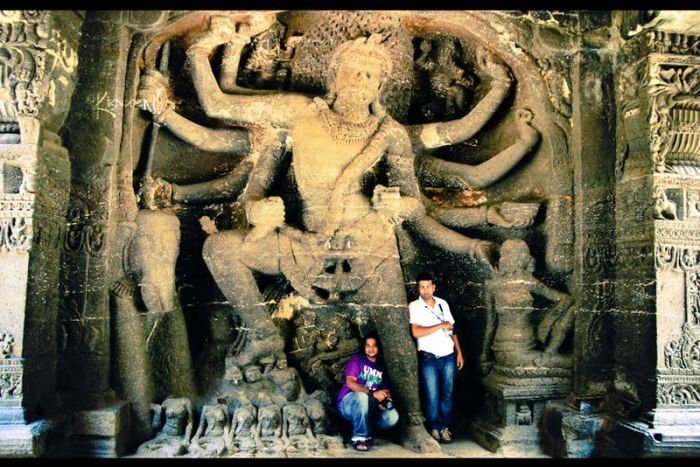|
|
Ellora Caves
|
The temple is a splendid achievement of Dravidian art. This project was started by Krishna I (757–773) of the Rashtrakuta dynasty that ruled from Manyakheta in present day Karnataka state. His rule had also spread to southern India, hence this temple was excavated in the prevailing style. Its builders modelled it on the lines of the Virupaksha Temple in Pattadakal. Being a south Indian style temple, it does not have a shikhara common to north Indian temples. – The Guide to the Architecture of the Indian Subcontinent, 1996, Takeo Kamiya, Japan Architects Academy and archaeological Survey of India
The Dashavatara
The Dashavatara (Cave 15) was begun as a Buddhist monastery. It has an open court with a free-standing monolithic mandapa at the middle and a two-storeyed excavated temple at the rear. The layout of the temple is closely related to caves 11 and 12. Large sculptural panels between the wall columns on the upper floor illustrate a wide range of themes, which include the ten avataras of Vishnu. An inscription of grant of Dantidurga is found on the back wall of the front mandapa. According to Coomaraswamy, the finest relief of this cave is the one depicting the death of Hiranyakashipu, where Vishnu in man-lion (Narasimha) form, emerges from a pillar to lay a fatal hand upon the shoulder of Hiranyakashipu.
|
|









